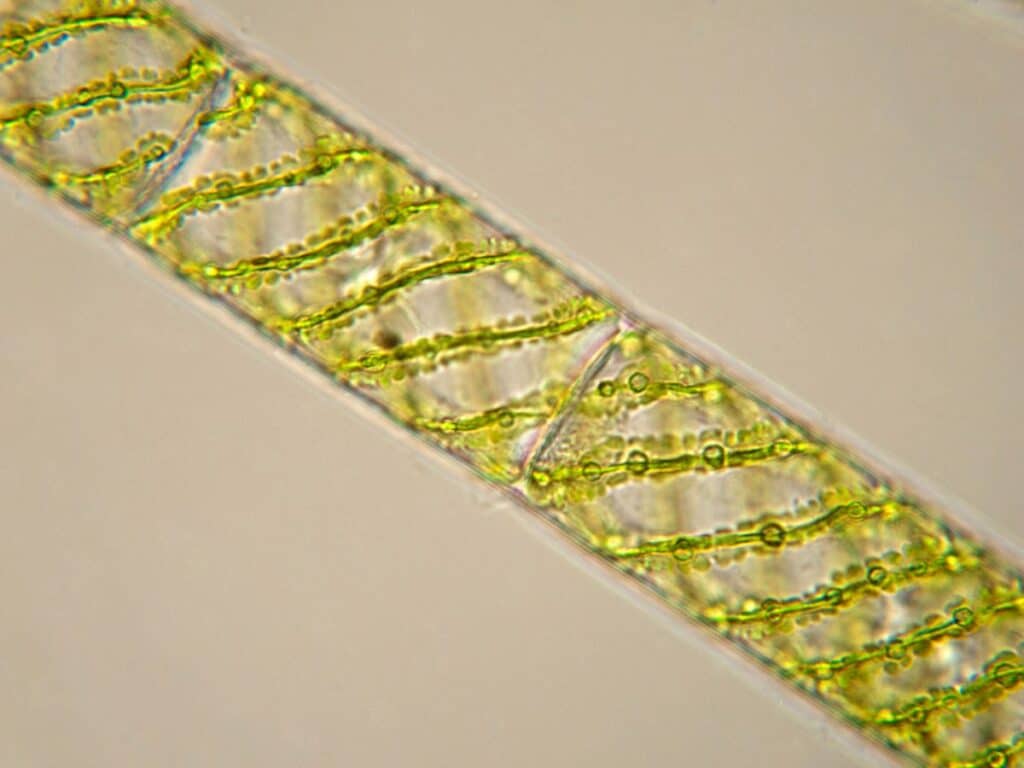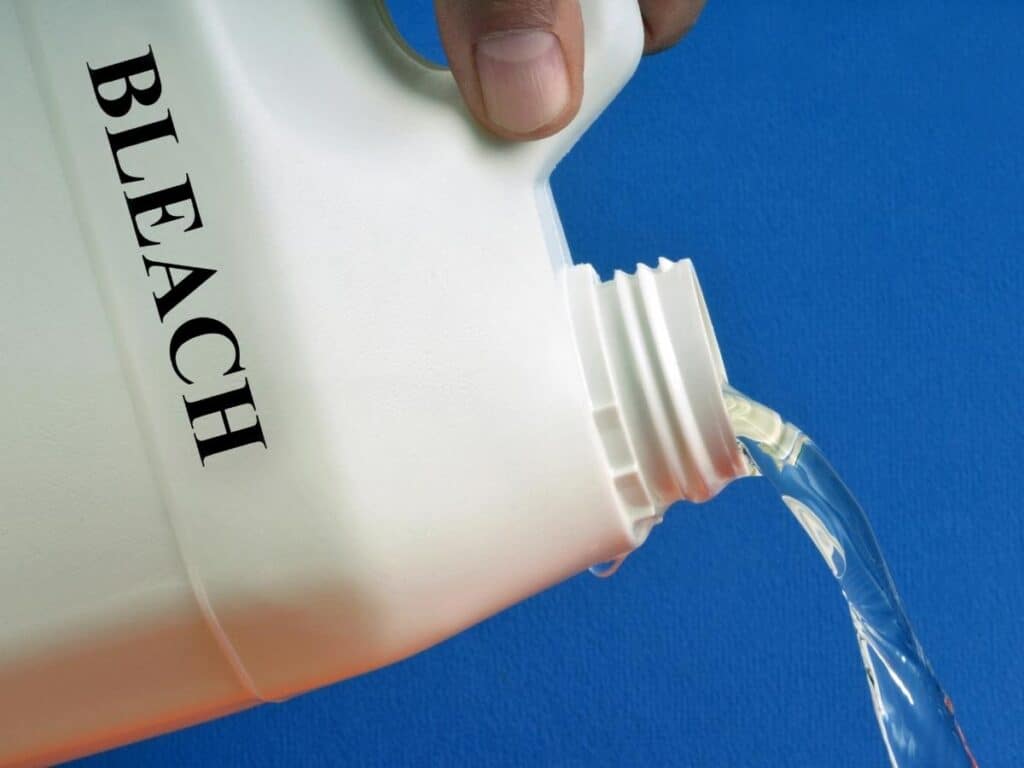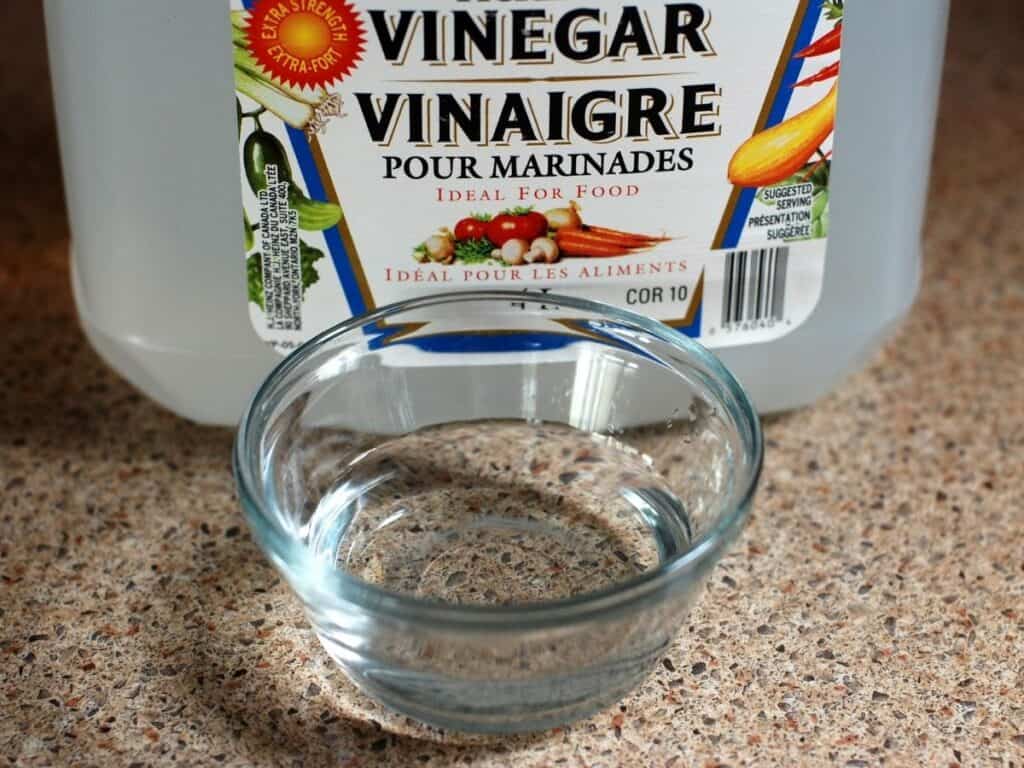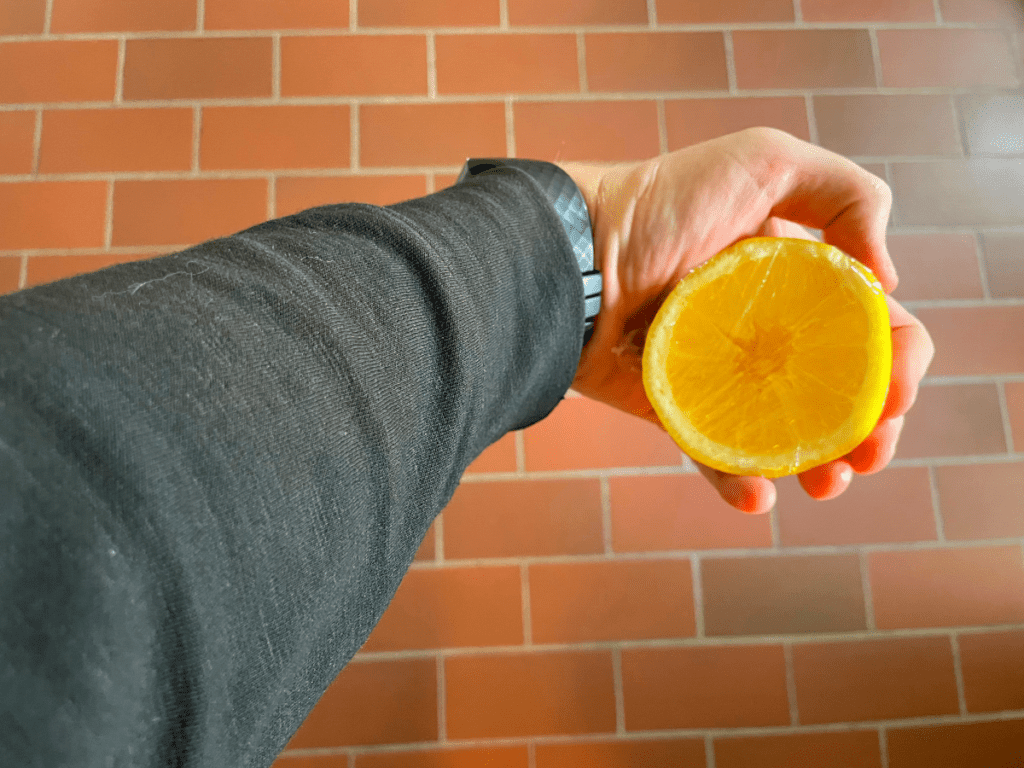Algae stains on clothes are not only a fashion disaster but also a health hazard. The algae spores might come in contact with the skin and cause infections. So when your clothes become moldy, or you see black algae or green algae stains on them, don’t put them in the washer with the rest of the laundry. That could easily spread the algae stains to the rest of the clothes. Instead, you need to treat those moldy clothes separately.
You can remove algae stains from clothes with bleach, distilled white vinegar, or borax. First, scrub the stains with a toothbrush, put them in the washer, and wash them with hot water to kill the algae spores. Then put the clothes out to dry in the sun to eliminate any spores that might have survived the washing and drying cycles.
So what exactly is algae, and how do clothes get batches of mold stains that ruin their look and texture? Read more to find out how to remove algae stains from fabrics and prevent them from returning.
What is Algae, and How do they Stain Clothes?

Algae come in different shapes, colors, and species. These simple organisms need water and sunlight to nourish and multiply. Much like a regular plant, algae need sunlight for photosynthesis. Through this process, they combine the carbon dioxide in the air with moisture to create food. And despite their simple appearances, algae are considered to be plants even though they have no stems or flowers.
Some algae can grow away from sunlight, but all need water to survive. This is why you’ll often find mold build-up in damp places like the basement, where ventilation is very poor. In fact, algae can grow on all surfaces, including smooth and non-porous ones. You’ll see them on the trunks of trees, on window sills sheltered from the wind, on awnings, on the patio, and on pipes and outdoor furniture.
Clothes offer mold fertile grounds to grow and multiply. Algae are attracted to wet and damp fabrics such as towels left in the hamper for far too long. Once the spores of algae land on the wet towel, they turn into small green or dark dots that continue to grow. From there, they will send more spores into the air that land on other items of clothing in the area.
Differences Between Black and Green Algae
Although there are thousands of algae species that can grow practically on any hospitable surface, the algae that stain clothes can be identified either as green or black algae. These are two distinct species that require specific treatment to get rid of them. But before you take the steps to remove these algae stains from the clothes, you need to understand the type of algae you’re dealing with.
Black algae stains are caused by bacteria called gloeocapsa magma. This hardy algae species is notorious for tolerating extreme conditions, including strong winds, harsh cold temperatures, and even direct exposure to the sun. The only requirement for black algae to grow is moisture. The spores are carried by the wind, where they settle on any surface and wait for moisture to start a new life.

As the name implies, black algae leave black or gray streaks on the fabric they infect. They are hard to remove since gloeocapsa magma has hard outer shells. Exposing the stained clothes to the sun will not kill the spores. The only two effective products that can eliminate the gloeocapsa magma are either chlorine or oxygen bleach. It’s recommended to soak the fabrics in the liquid overnight.
Green algae are more fragile. They cannot survive full sun exposure and will die in strong wind, cold temperature, or extreme heat. But like, black algae, these organisms need moisture. A combination of dampness and partial shade will trigger the sprouting of green mold build-up in a short time. Green algae are often seen on damp surfaces that don’t get too much sun or strong wind.

Clothes that get green mold turn green as well. The green pigment in the algae penetrates the fabric and gets absorbed rather quickly. It’s also a fast-growing type of algae that spreads quickly, and if you don’t treat the clothes quickly, the stains become tougher to remove the longer they stay.
Green algae are easier to remove than black algae, and the stains don’t need long hours of soaking. Moreover, you can kill the green algae spores with hot water or by hanging the clothes in the sun.
Will Algae Stains Damage Clothes?
Whether you’re dealing with black or green algae, you should treat the mold as quickly as you discover them. Green algae on hard surfaces make them smooth and slippery, which can be a hazard. The same can be said about mold build-up on roofs where the algae cause the erosion of the shingles. Worse still, when algae blend with fungi, they can turn into lichen, which is invasive and hard to remove.
But when it comes to clothes stained with algae, the damage is often limited to the discoloring of the fabrics. Black algae are harder to remove, but it doesn’t spread as quickly, nor does it stain the clothes as easily as green algae. In either case, you shouldn’t leave mold on clothes. Algae are alive even if they show no signs of life. With time the stains will grow larger, which could ruin the clothes.
You should also note that even after treating and washing algae stains, the spore might still be hiding in the fabric and waiting for moisture to spring back to life. So you should always dry moldy clothes in the full sun for a few hours to kill all the algae spores.
How to Remove Algae Stains from Clothes
When your damp towel has been lying at the bottom of the hamper for a few days, chances are it will smell funky. This funky smell is your first clue that mold is growing on the towel. When you put the towel to wash with the rest of the laundry, the algae spores will spread to the rest of the clothes and spread on any damp fabrics. You must treat the algae stains on the infected clothes before washing them.
Bleach

Bleach is one of the most effective products that you can use to kill algae spores and remove algae stains and mildew in fabrics. The only drawback to using bleach to remove algae stains is that bleach tends to fade colors. So you need to use it cautiously and according to the instructions on the package. Colorfast clothes are not prone to fading as other clothes, so you can safely soak the algae stain in bleach.
For best results, you need to soak the stains in a bowl full of bleach and water. You should use a half cup of bleach for every 3 liters of water. Soak for an hour, then use a clean toothbrush to scrub the algae stains away. Soak the clothes for another hour and scrub if the stains don’t go away. When the stains are gone, but the clothes in the washer and set it to a regular cycle. Hang the clothes to dry in the sun.
White Distilled Vinegar

Vinegar has the same lethal effect on algae spores as bleach. But white distilled vinegar doesn’t cause colors to fade in mild concentrations, so you can use it as a color-safe alternative for bleach. You’ll need one cup of vinegar for a bucket of water. Mix the solution well and drop the stained clothes in the bucket. You can soak the clothes for many hours, or in the case of severe stains, you can leave them in the bucket all night.
Stir the clothes in the bucket every few hours to make sure that the vinegar will find its way to the stain, break down the color pigments, and kill the spores. Use a toothbrush to scrub what remains of the algae stains and wash the clothes in the washer setting it to the maximum temperature applicable to the detergent. Put the laundry out to dry in the sun.
Borax

Borax comes either as a powder or a liquid. It’s a powerful product that works on spores, smells, and mold stains. You should follow the instructions on the package regarding soaking clothes. Follow the same steps soaking and scrubbing the stains off until they’re gone. Then wash the clothes in hot water and put them out to dry in full sun.
Lemon Juice and Salt

If you prefer to treat algae stains the old-fashioned way, then lemon juice and salt are the recommended approach. Squeeze lemon juice all over the algae stains liberally. Then sprinkle salt all over the stains and give it time for the fabric to absorb both the lemon juice and salt. Hang the clothes in the sun for a few hours. When the stains are dry, rub them vigorously with your hand, then wash the clothes in high temperature and regular detergent. Dry the clothes in the sun.
How to Clean Black Algae From Fabric
Although you can use the same methods and procedures to remove both green and black algae stains, black algae are more likely to grow back. The tough stains are harder to remove, which requires a more thorough pre-wash treatment. Follow these steps to clean black algae from fabric.
- You can use chlorine bleach for whites and oxygen bleach for colors.
- Soak the clothes in the liquid and use a toothbrush to work the enzyme into the stains. Don’t scrub the stains since they won’t come out at this stage.
- Keep the clothes soaked all night while you stir them occasionally to expose all the stains to the powerful enzyme.
- In the morning, use the toothbrush to remove the stains. This time, the black algae will come off quickly.
- Load the washer with the treated clothes and use cold water to prevent the setting of the stains.
- Add oxygen bleach to the washer as per the instructions on the package.
- After the end of the wash cycle, if you still see the stains, repeat the soaking and washing steps as necessary.
- Hang the clothes outside to dry in the sun.

Tips for Removing Algae Stains from Clothes
Using powerful products such as oxygen bleach, chlorine bleach, and borax is quite risky both for the clothes and your skin. So always follow these tips.
- Always wear gloves before pouring bleach and borax into water.
- Check the washing instructions on the tags of the clothes to determine which soaking product to use.
- Use oxygen bleach for colors and chlorine bleach for whites.
- Always dry the treated fabrics in the sun to get rid of the last algae spores.
- When washing treated green algae stains, use the maximum water temperature setting in the washer.
- Black algae stains should be washed in cold water since the heat would make the stains set.
How to Prevent Clothes from Getting Algae Stains
Most often, it’s easier to prevent mold build-up on clothes than to treat algae stains on fabrics. Here are some recommendations to keep mold away.
- Don’t keep the laundry in the washer after the end of the cycle.
- Leave the door of the washer and dryer ajar after you use it.
- Put out the laundry as soon as it’s done. Keeping damp clothes piled up leads to algae stains.
- Don’t stuff wet, sweaty, or damp clothes in the hamper, and forget about them. Hang them to dry first.
Conclusion
When algae stains build up on the clothes, you need to act fast to prevent further damage to the fabrics. If you have green algae stains, you need to soak them in a mixture of water and either borax, bleach, or distilled white vinegar. Scrub the stains with a clean toothbrush and wash them at high water temperature.
Black algae stains should be treated in bleach and washed in cold water. Hang the treated clothes in the sun to kill any algae spores left.
Next, you can check out my guide on how to fix discolored clothes.

I’m an expert wardrobe organizer and a bit of a clean freak. I created this website and its YouTube channel to share practical guides about laundry and organizing. My teachings have been featured in multiple large news publications, and I’ve self-published two wardrobe organizing books and an entire course on the subject.

